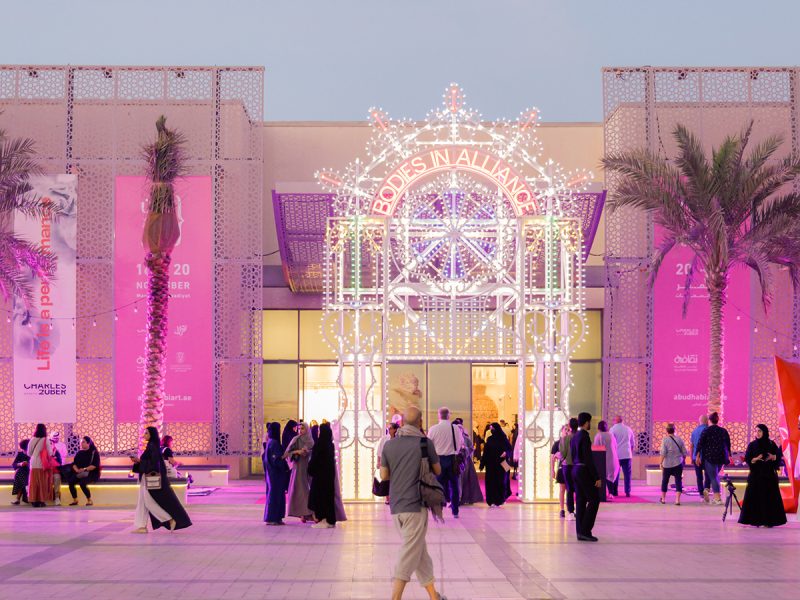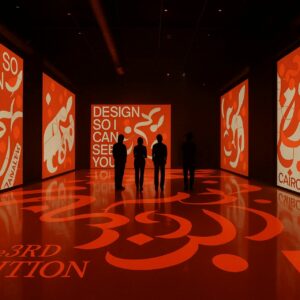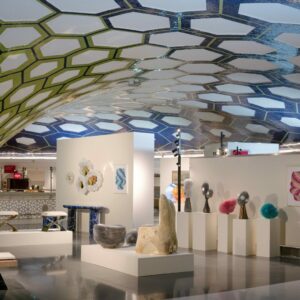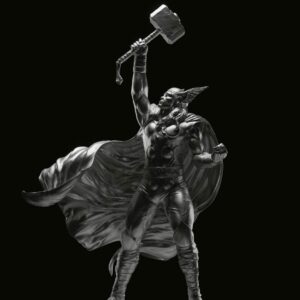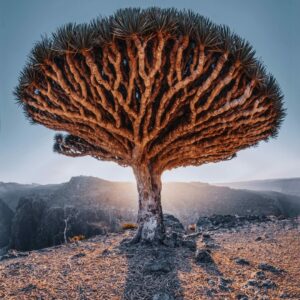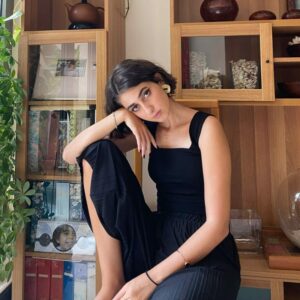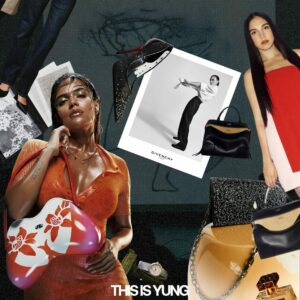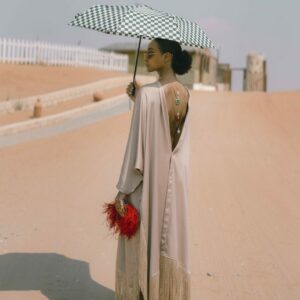Each November, Abu Dhabi Art Fair transforms Saadiyat Island into the region’s most magnetic cultural stage, a world where galleries, curators, collectors, and creators converge under one shimmering desert sky. But 2025 felt different. Bigger, sharper, more international in its ambition yet unmistakably rooted in the Emirates.
For its 17th edition, the fair swelled into a truly global moment: With over 140 galleries from around the world, including renowned global galleries like Pace and Mennour, regional anchors such as ATHR and Galleria Continua, and fresh voices like Loft Art Gallery from Casablanca or Pedro Cera from Portugal, the fair’s reach was more expansive and diverse than ever.
Abu Dhabi Art 2025 was not simply a fair, it was an entire week of storytelling. It was where the region’s past met global contemporary voices; where the Gulf’s cultural identity was re-imagined through sculpture, sound, paint, and code. And like every year, it was a place where you do not just see art, you experience it.
“Focus: Nigeria” – The Heartbeat of This Edition
This year’s Nigeria Spotlight arrived with the kind of energy that instantly became the fair’s talking point. Developed in collaboration with the country’s Ministry of Art, Culture, Tourism and the Creative Economy, the spotlight brought together seven galleries that define the pulse of West Africa right now.
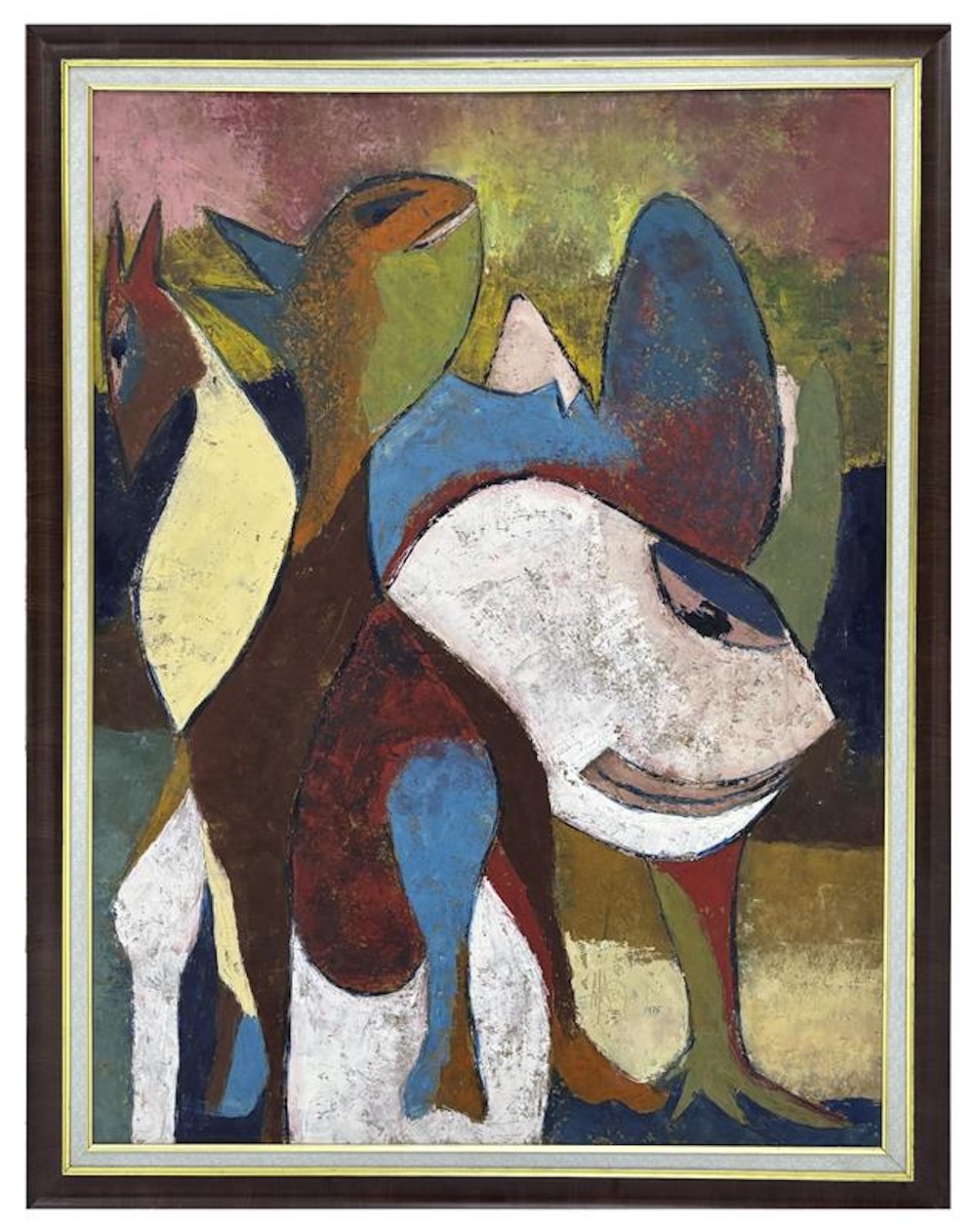
There were richly layered, story-forward works at SOTO Gallery, quietly disruptive conceptual pieces from AMG Projects, and the sharp, future-leaning voices championed by kó. A special MADhouse presentation, supported by Tikera Africa, added an experimental edge.
Together, these galleries formed one of the fair’s most magnetic curatorial chapters, a sector that didn’t just spotlight Nigeria, but reframed the conversation around what contemporary African art can be in 2025.
Modern Türkiye – A Dialogue Between the Past & Modernity
The Modern Türkiye feature, shaped by the curatorial eye of Doris Benhalegua Karako, unfolded like a beautifully edited time capsule of the country’s most formative artistic voices.
There was Art On Istanbul, where the unmistakable visual language of Burhan Doğançay anchored the room with his textured, urban abstractions. Nearby, BüroSarıgedik introduced a compelling pairing: the socially attuned narratives of Gülsün Karamustafa alongside the conceptual clarity of Cengiz Çekil created a conversation between personal memory and political history.

Then, in a moment of pure modernist brilliance, DG Art Gallery presented works by the legendary Fahrelnissa Zeid, whose vibrant geometries and fearless colour fields still feel revolutionary decades later.
Together, these presentations traced Türkiye’s 20th-century breakthroughs with a sense of rediscovery, not as nostalgia, but as a powerful reminder of how deeply the country shaped regional modernism.
The Gulf Region Sector – Home-grown Voices, Elevated
This year’s Gulf Focus read like a beautifully curated portrait of Khaleeji creativity, layered, experimental, and deeply rooted in the region’s evolving cultural language.
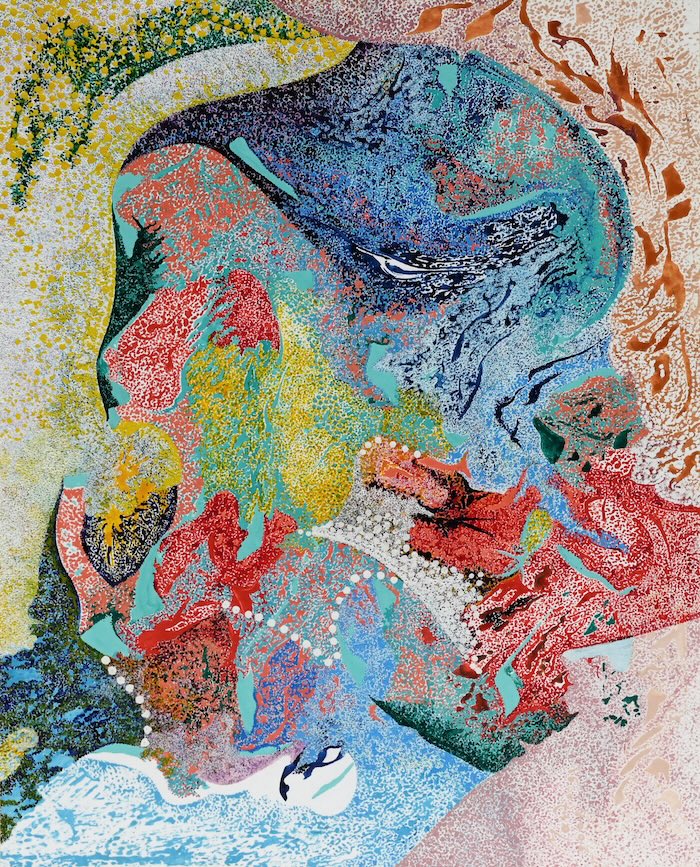
Hafez Gallery set the tone with striking works by Sami Al Marzoogi and Sara Alabdali, both artists weaving heritage into contemporary forms with surprising subtlety. Just steps away, Hunna Art brought a younger, more instinctive energy through the dreamlike, body-centric explorations of Alymamah Rashed alongside the poetic visual world of Joud Fahmy.

And then there was Gallery Isabelle, a pillar of the UAE’s art ecosystem, presenting seminal pieces by Hassan Sharif and Mohammed Kazem, two voices that have shaped the very vocabulary of Emirati contemporary art.

Across these presentations, the mediums shifted with conceptual gestures, sculptural interventions, and digital experiments, but the narrative felt united: a confident, forward-looking snapshot of the Gulf, grounded in heritage yet constantly rewriting what regional art can be.
The Collector’s Salon – Rarity, Prestige, Desire
A YUNG favourite. Once again shaped by the discerning eye of Roxane Zand, the Collector’s Salon offered one of the fair’s most refined experiences, a quiet enclave where connoisseurship takes centre stage.
Visitors were drawn to the impeccably curated selections at INLIBRIS, where rare books and historical manuscripts felt as precious as jewellery. Nearby, Daniel Crouch Rare Books extended the narrative with cartographic treasures and antiquarian finds that spoke to collectors who prize legacy as much as aesthetics.

On the contemporary end of the spectrum, Almine Rech and Perrotin introduced museum-calibre artworks with the kind of international prestige seasoned collectors scan for instinctively. Completing the arc, Kent Antiques offered a beautifully edited range of notable objects and antiquities that bridge art history and craftsmanship.
Think of it as the haute couture wing of the fair, it wasn’t just about viewing, but aspiring, collecting, and curating a future legacy.
Digital & Immersive Art – Code as Canvas
This year’s digital sector felt like stepping into the fair’s futurist heartbeat. The Digital Art Exhibition gathered some of the most intriguing voices working at the intersection of code and culture: generative experiments by Kim Asendorf and Loucas Braconnier & 0xmons; the uncanny, AI-trained motion study of James Bloom’s “Half Cheetah”; and evolving, system-driven worlds from Leander Herzog, Matt Kane, Mathcastles, and Sarah Friend, each explored how digital life grows, shifts, and depends on us.
On the gallery side, Pace delivered the sector’s definitive visual moment with teamLab’s breath-taking 12-screen installation Persistence of Life in the Sandfall, a digital landscape that dissolves, blooms, and responds as you move.
Completing the picture, the fair’s Art + Technology programme brought a regional thread: a kinetic-projection installation by UAE students collaborating with Dr. Ahmad AlAttar, translating traditional Sadu motifs into movement and light.
Compact, immersive, and irresistibly photogenic, this was where the fair’s spirit of innovation truly came alive.
Aldar Hall – A New Gateway for Global Voices
Marking the fair’s most visible expansion, Aldar returned as a key partner with the debut of Aldar Hall, a newly transformed exhibition space greeting visitors right at the entrance of Manarat Al Saadiyat. The hall brought a surge of cross-regional energy, spotlighting galleries from West Asia, North Africa, and West Africa, including exciting first-time participants such as OH GALLERY from Senegal, Yosr Ben Ammar Gallery from Tunisia, and Galerie Farah Fakhri representing the Ivory Coast.
The result was a dynamic new hub that widened the fair’s curatorial landscape, a place designed for bolder installations, deeper narratives, and the sense of architectural expansion that mirrored Abu Dhabi Art’s growing global footprint.
Abu Dhabi Art 2025 was a reminder of something simple yet powerful: in the Middle East, culture is no longer a sidebar. It is a force, shaping identity, inspiring dialogue, attracting global attention. This year’s edition stands as one of the region’s strongest expressions of creativity, confidence, and connection.
Whether you went for the installations, the galleries, or the conversations, you left with something far greater: a sense of what the future of art in this region looks like.
For more stories of art and culture from across the region, visit our dedicated archives and follow us on Instagram.
